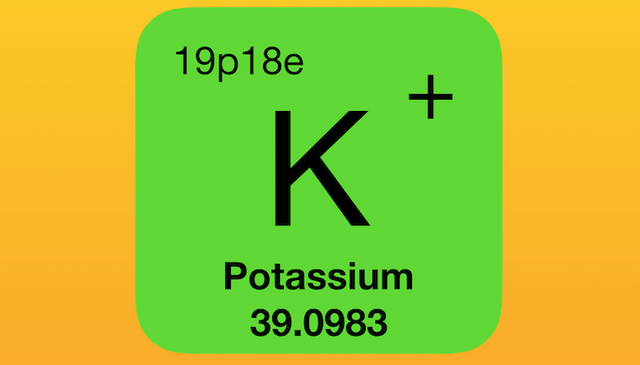
Hypokalemia is the low concentration of potassium in plasma, which is the fluid that surrounds the red blood cells (and all the other cells of the blood). It is a common condition that affects people who take certain medications or that do not nourish themselves properly. It is commonly seen in hospitalized patients and in chronicle ill people. There are various degrees of hypokalemia, from very mild to very severe. Mild hypokalemia can cause no symptoms at all, and severe hypokalemia can cause death. When hypokalemia is diagnosed it is usually described as “low potassium in the blood”. As we are going to see, this needs further explanation because potassium exists mainly inside the cells of the body.
The normal concentration of potassium in the plasma ranges between 3.5 mEq/L and 5.0 mEq/L. Any value below the lower limit of that range is considered hypokalemia. Low potassium concentration in the plasma is a reflection of a total body potassium deficit, because the majority of the potassium exists inside the cells and not in the plasma. There are multiple causes for hypokalemia (as we are going to see) and they usually reflect underlying processes occurring in the body. The regulation of the potassium concentration is managed by several hormones, and molecular receptors and transporters in the kidneys.
There are many ways of treating hypokalemia. They can be as simple as increasing the amount of potassium that the patient consumes, to the management of situations related to potassium loss such as the intake of diuretics. Sometimes, low potassium requires the management of certain hormonal conditions. We will review how these conditions cause hypokalemia and the mechanism of action of the treatment.
The importance of hypokalemia relies on how it affects the electrical conduction system of the heart and the nerves. A hypokalemic state has to be regarded as a state of risk of cardiac arrhythmias and altered nerve transmission that can lead to muscle weakness.
Congratulations @secondmedicalop! You received a personal award!
You can view your badges on your Steem Board and compare to others on the Steem Ranking
Vote for @Steemitboard as a witness to get one more award and increased upvotes!
Downvoting a post can decrease pending rewards and make it less visible. Common reasons:
Submit